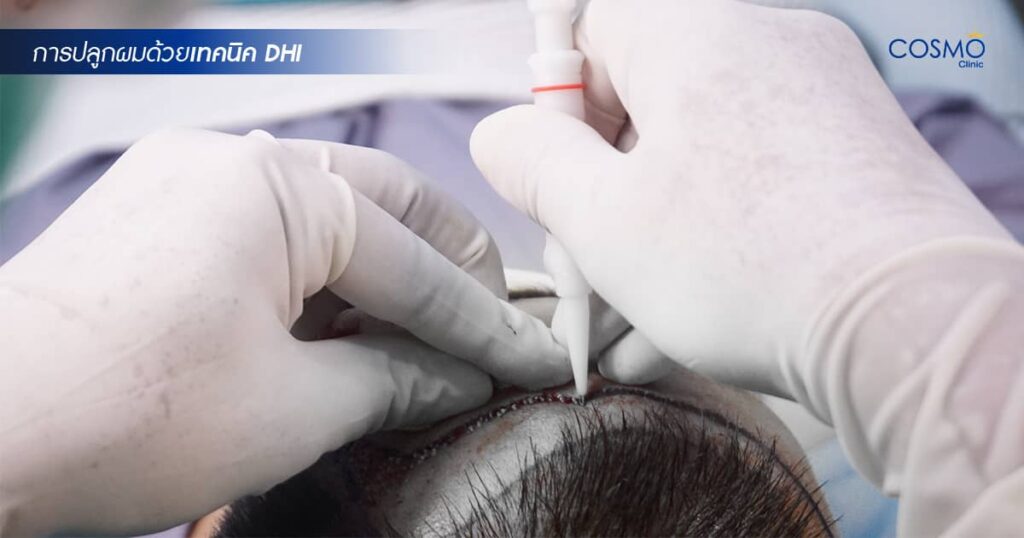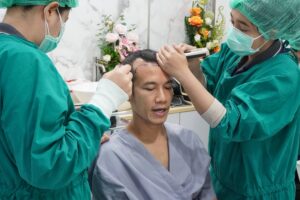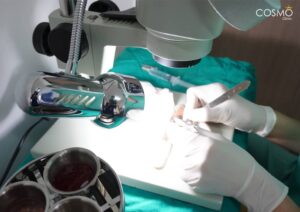Losing hair can take a toll on our self-esteem and confidence. Thankfully, advancements in hair restoration techniques have made it possible to regain a natural-looking and dense hairline. One such innovative technique is Direct Hair Implantation (DHI) hair transplant. In this blog post, we will explore the intricacies of DHI hair transplant, its process, advantages, and whether it may be the right solution for you.
Table of Contents
What is DHI Hair Transplant?
DHI hair transplant is an advanced method of hair restoration that sets itself apart from other techniques. Unlike traditional approaches, DHI involves the direct implantation of hair follicles into the recipient area, ensuring precision and optimal results. With DHI, you can expect a natural-looking hairline that matches your facial features and desired density.
The Process of DHI Hair Transplant
- Pre-operative Consultation: Before undergoing DHI hair transplant, a comprehensive consultation with a qualified specialist is crucial. They will assess your hair loss condition, discuss your goals, and determine if you are a suitable candidate for the procedure.
- Preparation for the Procedure: Prior to the transplant, the donor and recipient areas are prepared. The donor area, typically the back or sides of the scalp, is trimmed, while the recipient area is carefully examined and marked. Local anesthesia is administered to ensure a comfortable experience.
- Extraction of Hair Follicles: Using a specialized DHI technique, individual hair follicles are gently extracted from the donor area. This process preserves the viability of the follicles and minimizes damage to the donor area, resulting in better graft survival rates.
- Implantation of Hair Follicles: The extracted follicles are then meticulously implanted directly into the recipient area. The skilled surgeon uses precise tools to create tiny incisions and carefully places each follicle at the appropriate angle and direction to achieve a natural appearance.
- Post-operative Care: After the procedure, you will receive instructions on post-operative care, including medication, hygiene practices, and what to expect during the recovery period. Following these guidelines is crucial for optimal healing and hair growth.
Hair grafts
Hair graft, in the context of hair transplantation, refers to a surgical procedure where hair follicles are transplanted from one area of the scalp (known as the donor site) to a bald or thinning area (known as the recipient site). The objective of a hair graft is to restore hair growth in areas where hair loss has occurred.
There are two main types of hair transplant procedures: slit grafts and micrografts. Slit grafts contain 4 to 10 hairs per graft, while micrografts contain 1 to 2 hairs per graft, depending on the coverage needed.
Read moreAdvantages of DHI Hair Transplant
DHI hair transplant offers several advantages over traditional hair restoration techniques
- Natural and Dense Hairline: With DHI, the meticulous placement of hair follicles ensures a natural and dense hairline that blends seamlessly with your existing hair. The precision and customization contribute to a more authentic appearance.
- Minimally Invasive Procedure: DHI is a minimally invasive technique that minimizes scarring and promotes faster recovery compared to older methods. It utilizes specialized tools that reduce trauma to the scalp, allowing you to resume your daily activities sooner.
- Precise Hair Placement: The use of specialized tools and the expertise of the surgeon enable precise hair placement during DHI. This means that the direction, angle, and density of the implanted hair follicles are carefully controlled, resulting in a more aesthetically pleasing outcome.
Results and Recovery
After the DHI hair transplant, it is important to have realistic expectations. Hair growth is a gradual process, and you can expect to see visible results within a few months. It is essential to follow the post-operative care instructions provided by your surgeon to ensure proper healing and optimal hair growth. Long-term maintenance and care for the transplanted hair may also be recommended to maintain the results.
Is DHI Hair Transplant Right for You?
Determining whether DHI hair transplant is the right solution for your hair loss requires a consultation with a qualified hair restoration specialist. Factors such as the extent of hair loss, donor hair availability, and your overall health will be considered. It is essential to have a thorough discussion with the specialist, understand the limitations and potential risks, and make an informed decision based on your unique circumstances.
Whether DHI or FUE is better?
Whether DHI or FUE is better depends on various factors such as individual preferences, specific hair loss characteristics, and the expertise of the surgeon. It’s recommended to consult with a qualified hair transplant specialist who can evaluate your specific situation and provide personalized advice
Possible side effects
-
Infections: Like any surgical procedure, there is a risk of developing infections after DHI hair transplant.
-
Scabs and crust on the scalp: After the DHI procedure, scabs or crusts may form on the scalp where the hair follicles were implanted. These scabs are a normal part of the healing process and typically resolve within a week or two with proper care and regular washing of the scalp
-
Bleeding around donor and recipient sites: Some bleeding may occur during and after the DHI procedure. Surgeons apply pressure and use techniques to control bleeding.
-
Itching around the recipient site: It usually occurs during the healing process and is temporary.
-
Swelling: Some degree of swelling can be expected after a DHI hair transplant. It is most noticeable around the forehead, eyelids, and face. The swelling typically subsides within a few days to a week
-
Scalp pain and discomfort
-
Loss of sensation and numbness: Sensation typically returns gradually over time, but it may take several weeks or months.
-
Shock loss: It is a normal part of the hair transplant process, and the hair usually regrows within a few months after the procedure.
-
Reddish skin: This is a normal reaction and usually resolves on its own within a few weeks.
-
Scars around surgical sites: DHI hair transplant leaves tiny, almost invisible scars at the donor and recipient sites.
Conclusion
DHI hair transplant offers a breakthrough solution for individuals seeking to restore their hairline with precision and natural-looking results. By opting for this advanced technique, you can regain your confidence and achieve a fuller, denser head of hair. Consult with a qualified specialist to explore whether DHI hair transplant is the right choice for you and take the first step towards a rejuvenated appearance.










